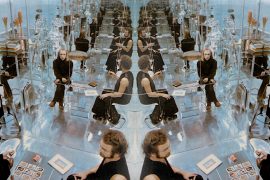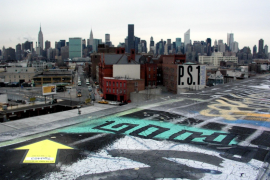In his blogpost “Ecstatic Ambient Literature,” colleague Matt Hayler wrote about how ubiquitous computing might provide stories that are waiting to be read, stories that are “in the air” or “in the walls.” Last month, the entrepreneur and digital maker Michael Kowalski came to talk to Bath Spa’s Digital Writing Research Group about his new digital story game platform, Storienteer, a platform that will enable people to create augmented reality games. Michael talked about how he thinks that the most interesting thing about Pokémon Go is that it demonstrates the power of augmented reality, in particular, not very accurate augmented reality. I would add that Snapchat, with its puking rainbows and zombie mask filters, has also shown how much people enjoy augmented reality even when the implementation is very simple, what Michael called “near augmented reality,” or perhaps even, near enough. We like accessing an extra layer of perception through the light-filled prism of our phones: it’s entertaining.
Another recent and significant cultural phenomenon is immersive theatre. By moving performance out of traditional theatre spaces and into the city itself, either through new non-theatre spaces — often de-commissioned industrial or office buildings — or onto the streets, immersive theatre carries with it a similar sense of interrupting familiar realities, adding layers of experience. In immersive theatre stories often emerge from the site where the work is performed — stories are revealed in new and unanticipated ways, pulled out of the air, out of the walls.
For my Ambient Literature commission I’m working on a story to be experienced, via smartphone, in a bedroom in a city — any bedroom, in any city. I’m using binaural sound and augmented reality — near enough augmented reality — in order to haunt my readers, in order to alter their perception of the familiar space — their room — in which they are reading. I’m going to try to capitalise on the complex and intimate relationships many of us have developed with our smartphones, and how we use our phones when we’re by ourselves, reading. I’m thinking about how best to use the phone’s sensors to augment the story as well as how to help the reader understand what aspects of the story the phone’s sensors might reveal.
I’m also thinking about the difference between public space and private space, and how the reader’s gender or ethnicity might influence their perception of the urban landscape, for instance, how it might affect their ability to interact with a story embedded in the urban landscape. Like many people, I’m not entirely comfortable with being immersed in a story as I walk through the city. In fact, I’d say I’m a little too paranoid, a little too on edge, a little too wound up in fight or flight mode to allow myself to be fully immersed in anything other than the task at hand — walking through the city.
But within the confines of my own home, where I trust the walls to both protect me from whatever is outside while also containing me and my imagination — for me, this is the domain of the story.
So I’ll set my story in a room — your room.
Is there a story in the wall beside the bed where you sleep every night?
— Kate Pullinger







